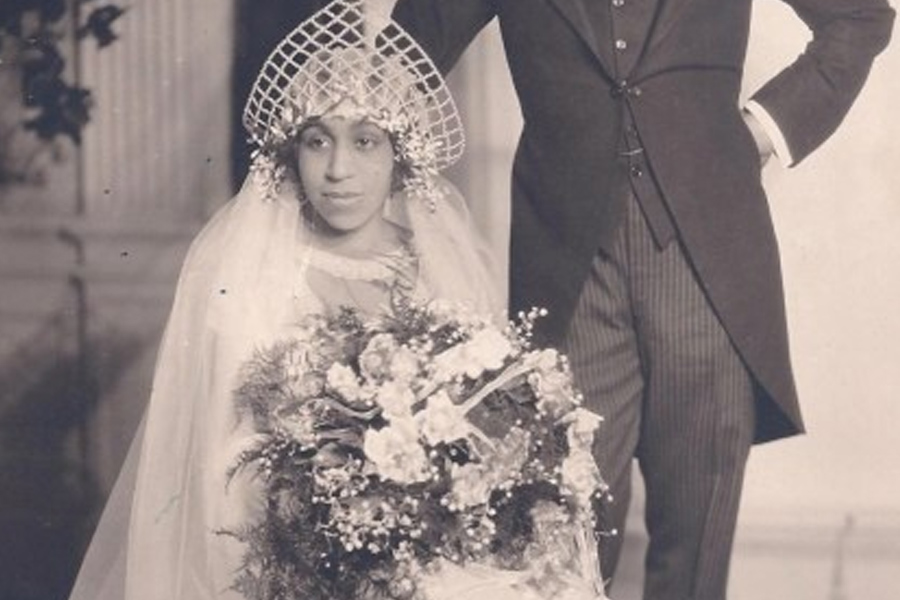Basic Information
| Field | Details |
|---|---|
| Name (as requested) | Fairy Mae Bryant |
| Birth | 25 November 1898 (Noblesville, Indiana) |
| Death | 6 December 1945 (Indianapolis, Indiana) |
| Age at death | 47 years |
| Biological parents | Perry Bryant (father), Sarah Etta (Hammonds) Bryant (mother) |
| Adoptive / Guardian | A’Lelia Walker (adoptive mother; daughter of Madam C. J. Walker) |
| Education | Attended Spelman (reported in family/historical accounts) |
| Major roles | Model and demonstrator for Walker products; assistant in the Walker household; later head/president of the family manufacturing company (after 1931) |
| Marriages | Dr. Gordon H. Jackson (married 1923; reported divorce 1926); later married Marion Perry (dates reported in family accounts) |
| Children | Walker Gordon Jackson (son, mid-1920s, per family accounts); A’Lelia Mae Perry Bundles (daughter, family descendant/biographer in later generations) |
| Years in family leadership | c. 1931–1945 (led the company after A’Lelia’s death until her own passing) |
If this were a film, Fairy Mae Bryant would be the character who steps from the wings into full, saturated light — braided hair catching the flashbulbs, a smile practiced for the camera, and a private life that reads like a wardrobe trunk of secret notes: adoption, couture weddings, business meetings, and a role at the center of a Black entrepreneurial empire. I write about her as someone piecing together a cinematic life from family recollections and public traces — and I’ll let the numbers anchor the rhythm.
A life in dates and quick beats
- 1898: Born 25 November in Noblesville, Indiana — a small-town beginning for someone who would later orbit Harlem’s social constellations.
- c. 1912: Taken into A’Lelia Walker’s household as a young teen — adoption and guardianship that changed her trajectory.
- 1923: A spectacle of a wedding arranged by A’Lelia — a social event that became a touchstone in family lore.
- 1926: Reported divorce from Dr. Gordon H. Jackson — a quick, public marriage that did not last.
- 1931: A’Lelia Walker dies; Fairy Mae steps into company leadership shortly thereafter.
- 1945: Dies on 6 December at age 47 after a public life threaded through business and family.
Family circle — faces, names, roles (a compact table)
| Name | Relationship to Fairy Mae Bryant | Short introduction |
|---|---|---|
| Perry Bryant | Biological father | A local worker from Noblesville — the family’s Midwestern root. |
| Sarah Etta (Hammonds) Bryant | Biological mother | Part of the household that allowed Mae to travel and work with the Walkers. |
| A’Lelia Walker | Adoptive mother | Daughter of Madam C. J. Walker; socialite and patron who shaped Mae’s public life. |
| Madam C. J. Walker (Sarah Breedlove) | Adoptive-grandmother (by adoption lineage) | The enterprise founder whose brand and wealth formed the world Mae entered. |
| Dr. Gordon H. Jackson | First husband | A socially prominent physician; the 1923 union was lavish but short-lived. |
| Marion Perry | Second husband | An attorney reported in family records; represents a later chapter. |
| Walker Gordon Jackson | Son | Reported child from the first marriage, born mid-1920s in family accounts. |
| A’Lelia Mae Perry Bundles | Daughter / descendant | A later-generation family member who carried the family stories and memoir impulse forward. |
Career, roles, and a company in motion
Fairy Mae’s public identity was braided into the Walker brand: she modeled, demonstrated products, and became a recognizable face for the business — the kind of live advertisement that turned hair demonstrations into theater. After A’Lelia’s death in 1931, Fairy Mae is recorded as taking on a leadership mantle at the Madam C. J. Walker Manufacturing Company — running operations, representing the brand, and stewarding family assets through the 1930s and early 1940s. That span — roughly 14 years — saw a Black-owned enterprise navigating the Depression and shifting markets, with Fairy Mae often cited as its public steward.
A detail that always reads cinematic: the 1923 wedding. Think Gatsby-level pageantry translated into Harlem-era splendor — photographic tableaux, family gowns, and newspapers that framed it as a major social moment. The story traveled and reappeared in social memory: an emblem of status, possibility, and the contradictions of wealth in a segregated America.
Money talk — what we can (and cannot) say
There’s no precise personal net-worth figure attached to Fairy Mae Bryant in surviving public records; family narratives emphasize “substantial family wealth,” lavish events, and the trappings of prominence, but not a line-itemized fortune for Mae herself. What we can say numerically: she presided over company interests from about 1931 to 1945, and the family’s social expenditures — weddings, homes, and philanthropic visibility — were often described contemporaneously as costing “many thousands of dollars,” which in the 1920s and 1930s equals significant purchasing power.
Voices and small scenes — the human texture
I imagine a scene: Mae standing beside a demonstration table, braid coiled like a dark rope of history, showing women how a product would smooth their hair; headlines hum in the background; a younger relative sketches the wedding cake; a board meeting follows a photo shoot. These fragments — education at Spelman, high-society ceremonies, a presidency in a family firm — are not just facts, they are beats in a life that oscillates between public roles and private ties.
Why her story still matters
Because she sits at an intersection: adopted into a pioneering Black entrepreneurial dynasty, she was a woman who moved from Midwest roots into national prominence; who balanced being a model, a daughter, a wife, a mother, and a business leader — all within an era when such mobility for Black women was exceptional and visible. Her name, preserved here as Fairy Mae Bryant, is a hinge between small-town origins and grander, complicated legacies.
FAQ
Who was Fairy Mae Bryant?
Fairy Mae Bryant was a woman born in 1898 who became part of the Walker family, serving as a model and later as a leader in the family manufacturing company until her death in 1945.
What were her birth and death dates?
She was born 25 November 1898 and died 6 December 1945, passing away at age 47.
Who adopted her and why is that important?
She was taken into the household of A’Lelia Walker, daughter of Madam C. J. Walker, which placed her at the center of a major Black-owned business and elite social network.
What was her role in the family business?
She worked as a demonstrator/model and later assumed leadership of the manufacturing company after 1931, guiding it through the 1930s and early 1940s.
Did she have children?
Yes; family accounts mention at least two children: Walker Gordon Jackson (a son tied to her first marriage) and A’Lelia Mae Perry Bundles (a daughter in the family line).
How public was her wedding in 1923?
Extremely public by the standards of the day — described as a lavish, socially notable event that entered family lore and newspaper pages.
Is there a reliable net worth for Fairy Mae Bryant?
No precise net-worth figure is documented; contemporary accounts emphasize family wealth and high-profile expenditures but do not list a specific personal fortune.
What education did she receive?
Fairy Mae is reported to have attended Spelman, which situates her among educated Black women of her era.



